Key Takeaways:
- Convenience and flexibility are the top reasons for students choosing online courses over on-campus programs
- Research showed that 71% of the C-suite executives agreed that credentials earned online have an equal or higher quality than those who completed in-person learning based on their perspectives.
- Paraguay, Lebanon, Philippines, Guyana, and Indonesia were the top five emerging economies with the highest rate of new learner growth with 98%, 97%, 85%, 74%, and 69% increases respectively.
- One major factor observed regarding the rise in online degrees is upskilling concerns for employability.
In our previous insight article, we discussed the perception of international students on hybrid online learning. According to the 2022 Online Education Trends Report, convenience and flexibility are the top reasons for students choosing online courses over on-campus programs.
Moreover, the Global Anthology study, “Comparing Global University Mindsets and Student Expectations,” surveyed more than 5,000 higher education leaders and current students from countries around the world, including the United States, Australia, Brazil, Colombia, India, Japan, Spain, Saudi Arabia, South Africa, and the United Kingdom. Data revealed that more than 80% of students globally prefer that at least some of their courses or instructional meetings take place online.
While the disruption brought by the pandemic created an uncertain future for many, the gradual transition of different global education providers to a hybrid setup offered more opportunities for global students to pursue their education and reskill for their future while giving a range of perspectives and possibilities to the international academe at the same time.
The Popularity of Online Programs
It is great to see that students across the globe are realizing the value of online learning. Despite the limitations in mobility and access to travel caused by the pandemic, students are still eager to learn even in the relative comfort of their homes.
In turn, international education providers are taking full advantage of this mechanism by offering distance learning solutions to their students and promoting remote work in the community.
In a blog released by LinkedIn Learning, figures showed a 46% increase in time spent learning by enterprise learners.
Meanwhile, Google announced 100,000 scholarships for online certificates in data analytics, project management, and user experience design through Coursera in 2020.
In 2021, Coursera, the US-based massive open online course provider, revealed in its 2021 Impact Report that over 20 million new learners have come to Coursera in the past year to access world-class courses.
“Early in the pandemic, online learning shaped the response to a global crisis that changed the way we learn. More than a year later, new trends show that the combined force of online learning and remote work is creating a powerful opportunity to provide not just skills but more equitable job opportunities worldwide,” Coursera CEO Jeff Maggioncalda said.
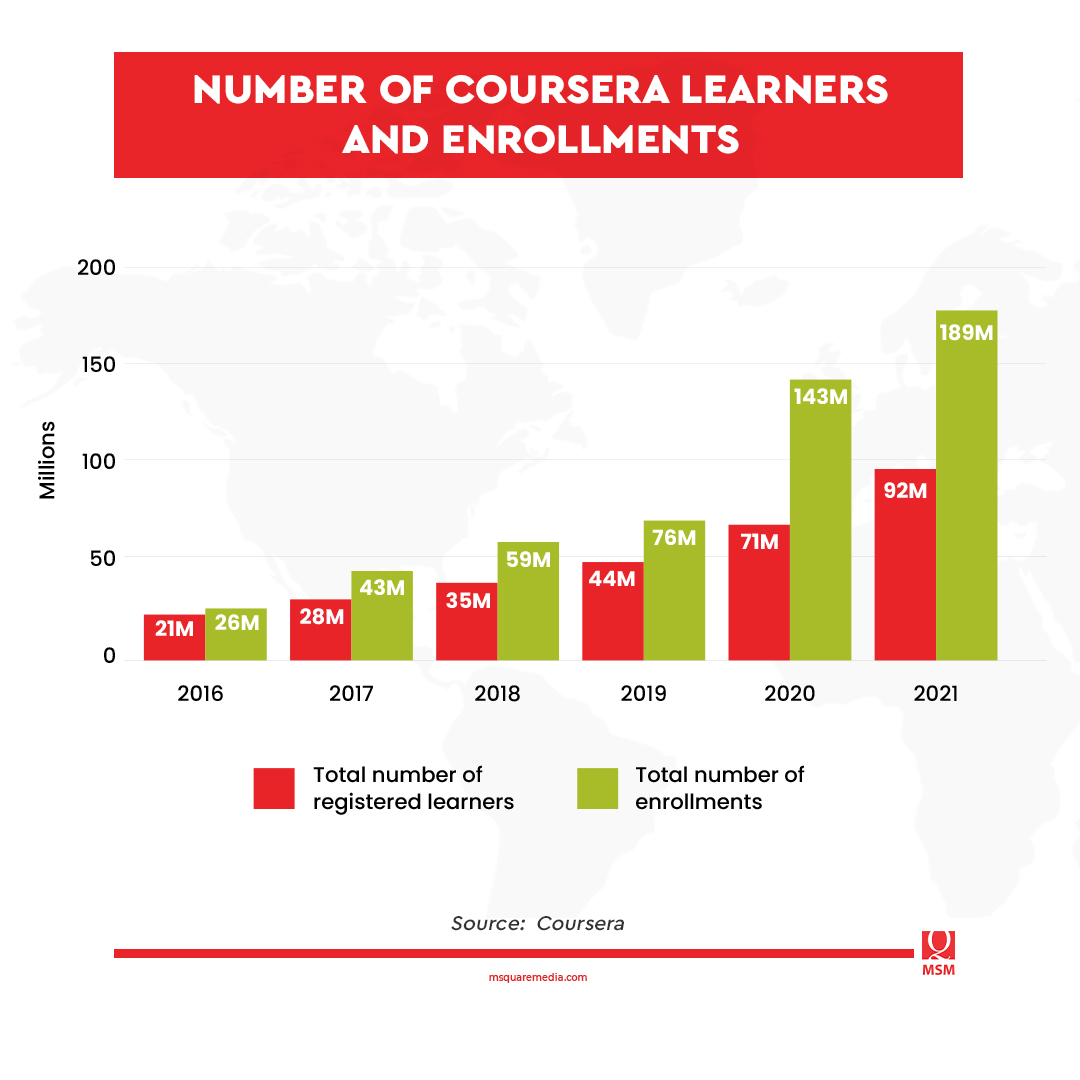
The numbers showed that there’s an annual increase of seven million new learner registrations for Coursera since 2016. But starting in 2020, the pandemic triggered a
threefold increase, resulting in figures of 71 million and 92 million in 2020 and 2021, respectively.
When it comes to satisfaction rate, 81% of its learners give their course a 5-star rating and 94% would recommend online programs to their friends. Also, 71% of its learners reported career benefits.
Furthermore, an article released by Forbes reported that graduate students enrolled in online MBS programs in the US outnumbered those in full-time, on-campus MBA programs.
In the 2020-2021 academic year, around 45,038 students were enrolled in Online MBA options in the US, compared to 43,740 in full-time programs, according to the Association to Advance Collegiate Schools of Business (AACSB), the primary business school accreditation agency.
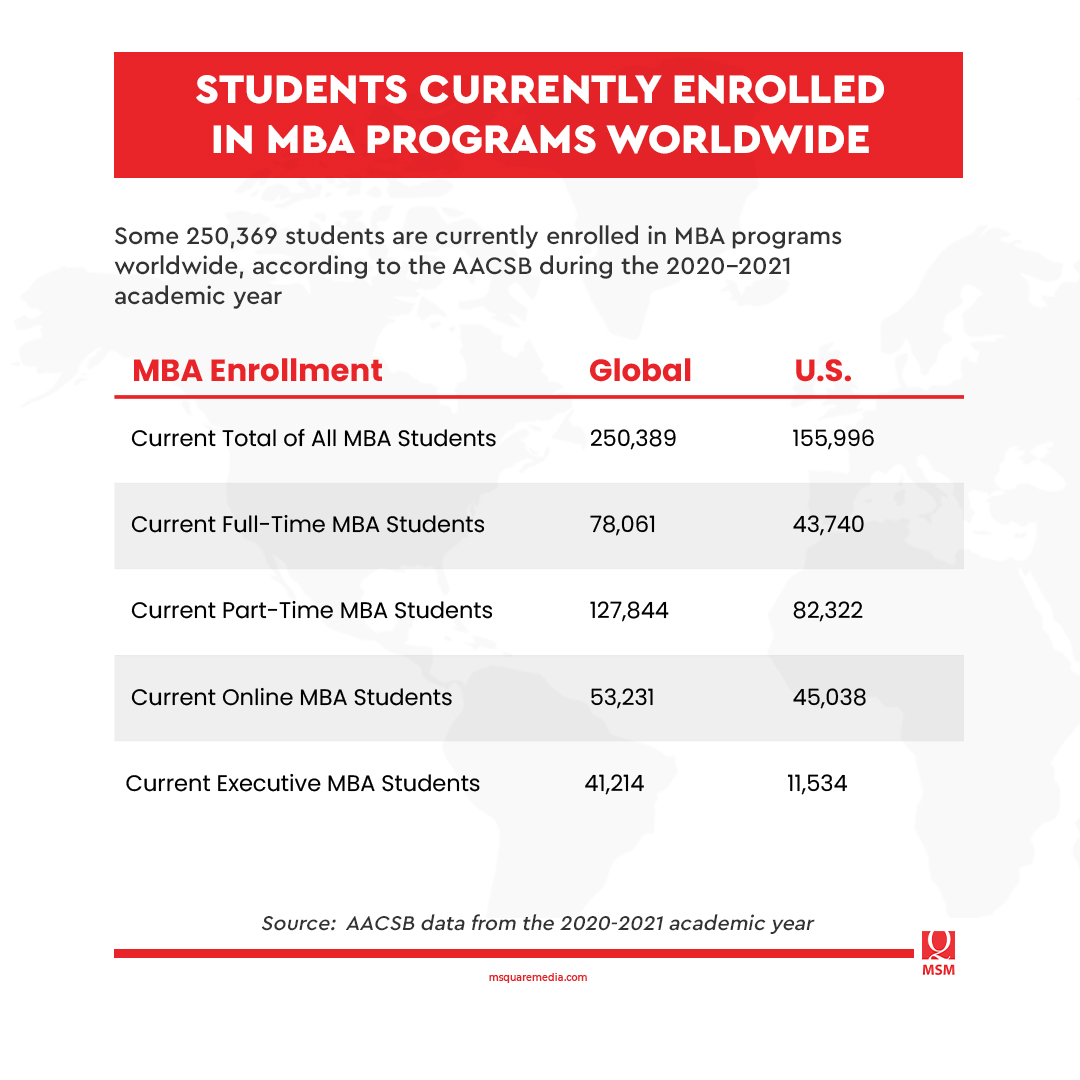
While there may be some notions that there’s a huge gap in the quality of education between online and on-campus learning, the Center for the Future of Higher Education and Talent Strategy research showed that 71% of the C-suite executives agreed that credentials earned online have equal or higher quality than those earned through in-person learning.
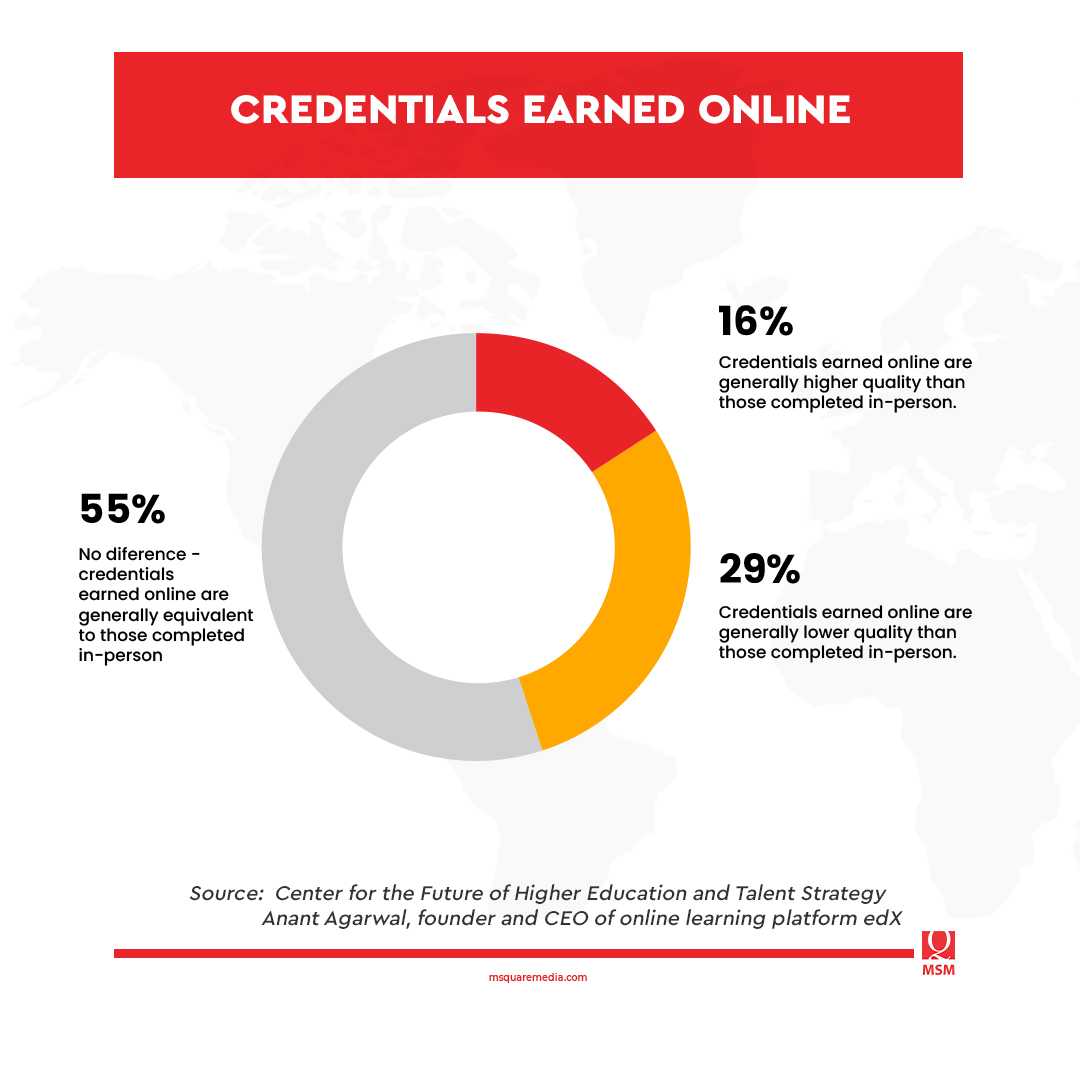
The market
Although the pandemic may have pushed the demand for online programs to increase, there are also other factors that contributed to the popularity. According to Agarwal of edX, one major factor observed is upskilling concerns for employability.
“Before the pandemic, we were preparing for the future work where we believe over the next five to 10 years, half of today’s jobs would be gone. So we were already offering a lot of short programs and courses for people to skill up in cutting-edge topics like AI and machine learning,” he says. “And then the pandemic hit, suddenly people who were in jobs began to realize ‘Oh, my goodness, I need to be prepared for if I lose my job.’”
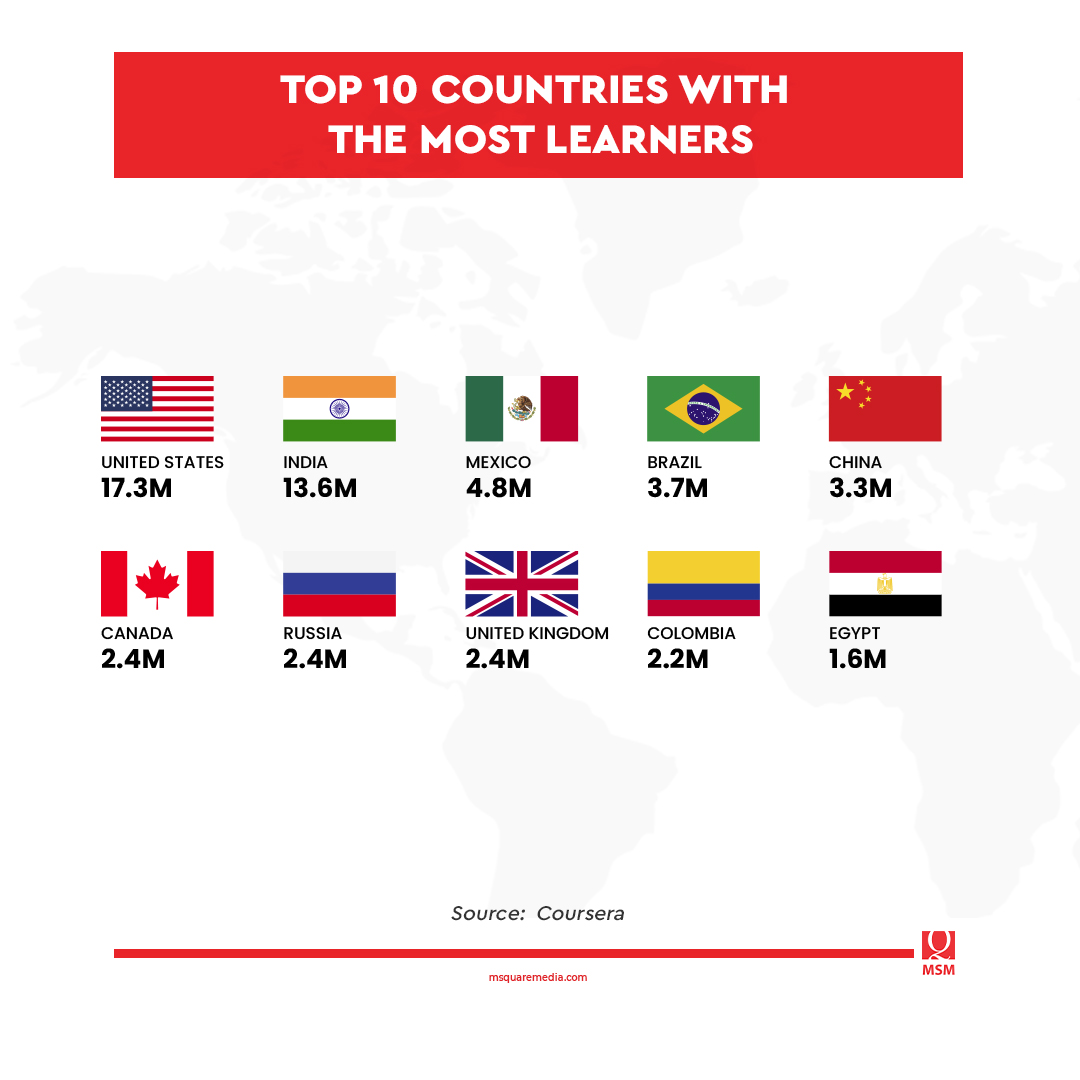
In Coursera’s 2020 impact report, the United States ranked first with 14 million learners. With 9.8 million online learners, India placed second. Mexico, China, and Brazil followed with 3.8 million, 3.5 million, and 3 million students, respectively.
The following year, the top five countries with the most online learners in its 2021 report were pretty much the same—the U.S., India, Mexico, Brazil, and China.
Meanwhile, Paraguay, Lebanon, the Philippines, Guyana, and Indonesia were the top five emerging economies with the highest rate of new learner growth with 98%, 97%, 85%, 74%, and 69% increases respectively.
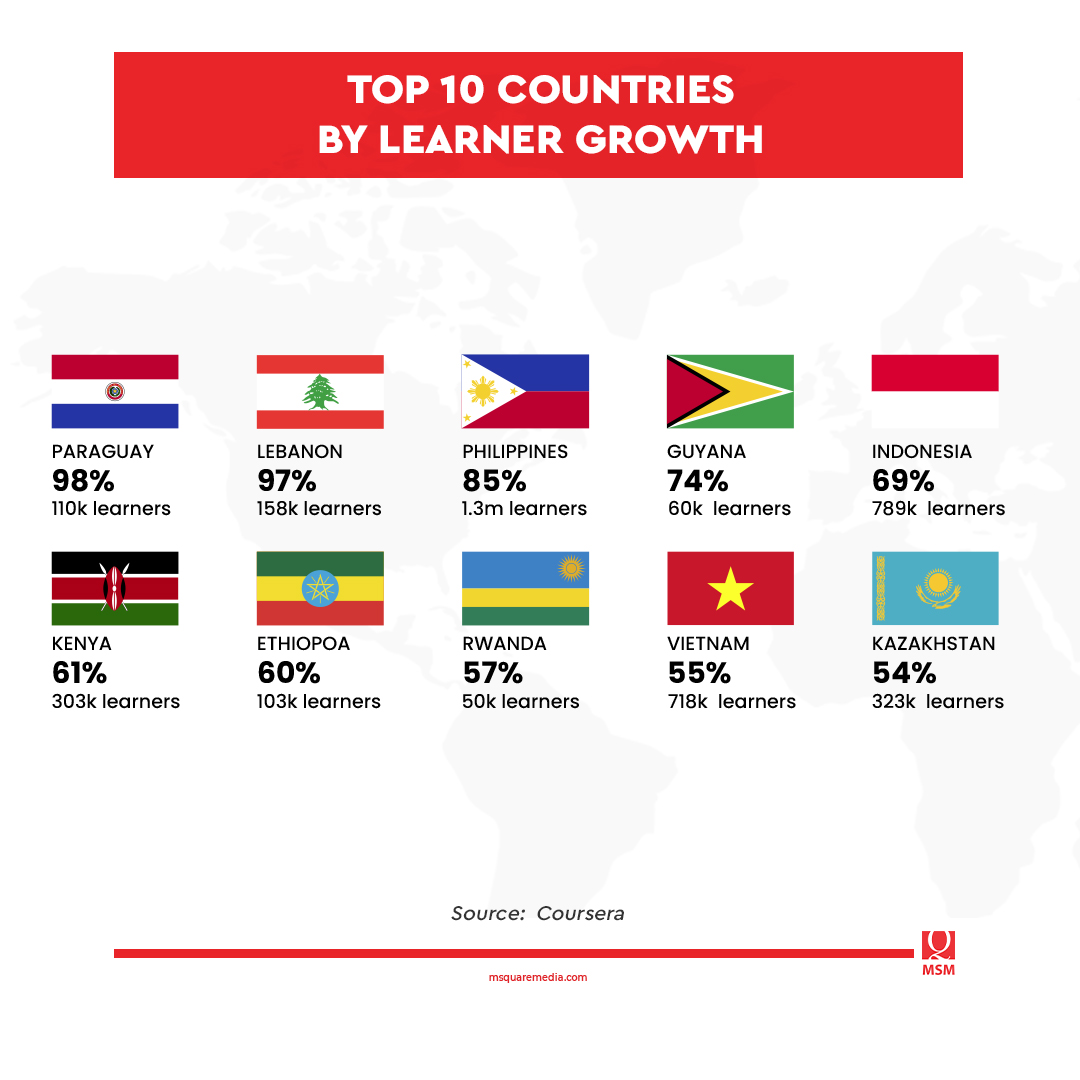
In turns out that the highest growth came from regions where higher education infrastructure is severely constrained in its capacity to meet the demand of a growing population.
Emerging New Recruitment Angle
Global education providers and agents must be open-minded to this golden opportunity, where online programs are gaining popularity among diverse international students who are looking for a flexible and cost-efficient way to upskill.
Some may doubt that it would lead to a dramatic decrease in foreign enrollments but I digress. Education institutions would do well to be able to offer both online and on-campus sessions and this may even help in converting more students, both domestic and international.
Partnership with premier universities and institutions looks promising as well. Many institutions are offering access to online courses in computer science, engineering, mathematics, business, art, and personal development.
Conclusion
According to Research and Markets forecasts, the Online Education Market will reach US$ 350 billion by 2025, globally, due to the introduction of flexible learning technologies in the corporate and education sectors.
Needless to say, it is a reassuring sign for the education sector’s future. However, some may also raise their eyebrows thinking that online degrees gaining prominence may adversely affect international recruitment.
It is part of our duty as education leaders and solution providers to make quality education accessible to students everywhere. Thus, despite all these hesitations, an old aphorism suggests, “Look at things from a different perspective.” (SUNEETHA QURESHI)

SUNEETHA QURESHI
MSM President
Suneetha has worked for 15 years in the international education sector and 25 years overall for various industries. As president of MSM, she fortifies its business development outreach globally, particularly in the face of MSM’s foray into edtech-based recruitment via MSM Unify. She preserves the premium, value-adding services provided to each MSM partner institute, including dedicated teams on the ground, agent management, lead generation and inquiry management, application prescreening, and student and parent support through pioneering pre-departure briefing sessions.
She has an impeccable track record of successfully launching the representative offices in Asia and Africa of many North American and European higher education institutions. Her key strengths include hiring, training, and developing teams as evidenced by the successful results of the dedicated in-country college and university client teams.
Suneetha also has taken the lead in developing several initiatives at MSM, including building robust standard operating procedures, the Rise ‘n Shine team engagement platform, and the organization’s data analytics and audit segments.
Sources:
- Byrne, J. 2022. Online MBA Students Now Outnumber Full-Time MBAs. Forbes. Retrieved from https://www.forbes.com/sites/poetsandquants/2022/05/03/online-mba-students-now-outnumber-full-time-mbas/?sh=6c303707f5ff
- 2022. Online Education Trends Report. BestColleges. Retrieved from https://www.bestcolleges.com/research/annual-trends-in-online-education/
- 2022. Online degrees gaining new prominence because of the pandemic. icef Monitor. Retrieved from https://monitor.icef.com/2022/05/online-degrees-gaining-new-prominence-because-of-the-pandemic/
- Hess, A. 2021. Online learning boomed during the pandemic—but what happens when students return to classrooms?. CNBC. Retrieved from https://www.cnbc.com/2021/03/26/online-learning-boomed-during-the-pandemic-but-soon-students-return-to-school.html
- 2021. 2021 Impact report. Coursera. Retrieved from https://about.coursera.org/press/wp-content/uploads/2021/11/2021-Coursera-Impact-Report.pdf
- 2021. Global Online Education Market 2021-2026. Mobility Foresights. Retrieved from https://mobilityforesights.com/product/online-education-market/
- Hess, A. 2020. As many as 30 million workers without college degrees have the skills to earn 70% more, report finds. CNBC. Retrieved from
- https://www.cnbc.com/2020/12/16/30-million-workers-have-the-skills-to-earn-70percent-more-report-finds.html
- Koksal, I. 2020. The Rise Of Online Learning. Forbes. Retrieved from https://www.forbes.com/sites/ilkerkoksal/2020/05/02/the-rise-of-online-learning/?sh=412cc91072f3
- Nuys, A. 2020. 5 Trends that are Creating a Global Surge in Online Learning at Organizations. Linkedin Learning. Retrieved from https://www.linkedin.com/business/learning/blog/learning-and-development/5-trends-that-are-creating-a-global-surge-in-online-learning-at
- 2020. Google Announces 100,000 Scholarships for Online Certificates in Data Analytics, Project Management, UX. Communications of the ACM. Retrieved from https://cacm.acm.org/news/246289-google-announces-100000-scholarships-for-online-certificates-in-data-analytics-project-management-ux/fulltext
- 2019. Online Education Market & Global Forecast, by End User, Learning Mode (Self-Paced, Instructor Led), Technology, Country, Company. Research and Markets. Retrieved from https://www.researchandmarkets.com/reports/4876815/online-education-market-and-global-forecast-by?utm_source=dynamic&utm_medium=BW&utm_code=nvzl68&utm_campaign=1334853+-+$350+Billion+Online+Education+Market:+Global+Forecast+to+2025+by+End+User,+Learning+Mode+(Self-Paced,+Instructor+Led),+Technology,+Country,+Company&utm_exec=chdo54bwd

